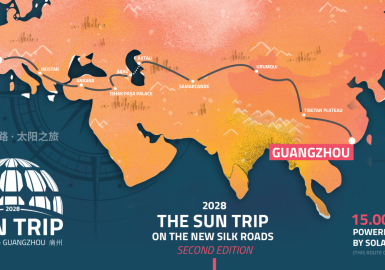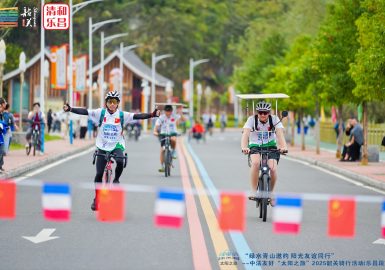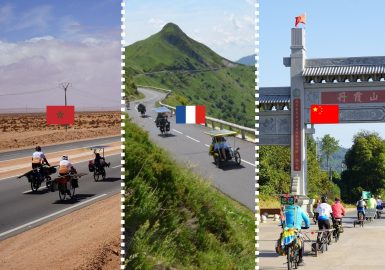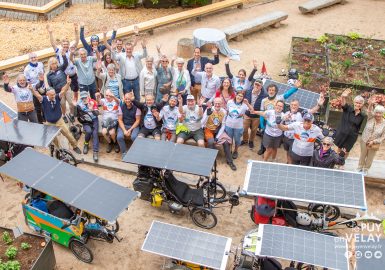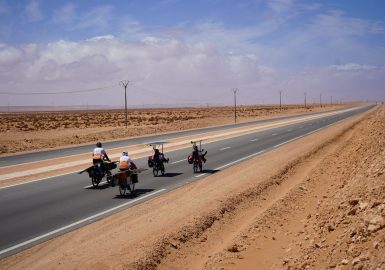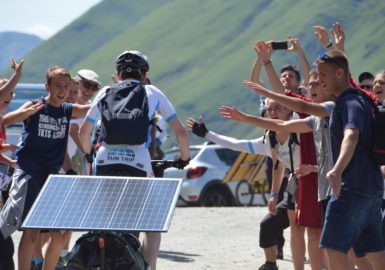This is the first article of this series. I publish a lot of pictures on my facebook page, the ones posted here will be a bit different. I still have to find my feet between the two, but I think we’ll get something good 🙂 Basically, on facebook I’ll be sharing more about the daily life, while here I’ll be posting more about the landscapes I’ve crossed.
For the first week, not many kilometres were covered. I will therefore show you the bikes of some participants, in all subjectivity. Next week, we’ll get to the heart of the matter 😉
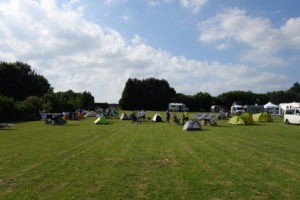
Here is an overview of the camp at the arrival of the prologue, whose participants will gradually leave the place as those of the Sun Trip Europe arrive.
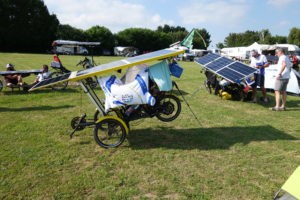
Classic view: To maximize production at the end of the day, owners of bikes with non-tilting panels find every way to tilt their frame. Which can also be used as a wardrobe 🙂
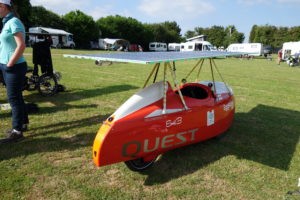
Arrival of the first velomobile, a machine that everyone will be looking at this year. Light and very streamlined, they allow us to maintain a very good average speed with little energy. On the other hand, we will have to see how reliable they are over time and on the bad roads that we are likely to encounter. Here, the one of Emile Barbut.
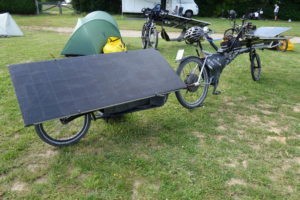
The bike of Raf van Hulle, winner of the 2018 edition. Based on a Hase Pino tandem with the front passenger seat removed to make room for a panel. Note the Pinion box in the crankset, which allows for an almost foolproof transmission, limited to a belt and a freewheel.
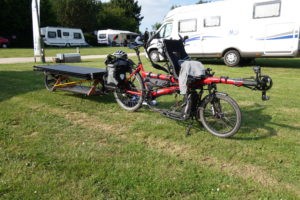
The same in a classic version, used by Valérie and Bertrand Nerincx.
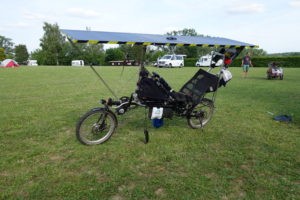
The coolest looking bike on the board. A low-rider modified by its (no less cool) owner Fred Koch, with a Bafang pedal motor. Light, but with a reduced panel area, a totally opposite solution to mine 🙂
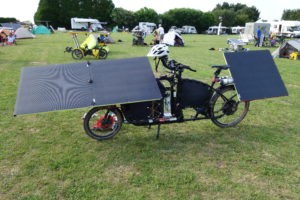
Arnaud Roulland’s Douze Cycles, also a very clean set up with a Pinion box and a RH212 wheel motor. And custom made panniers by Marion & Quentin for the ultimate finishing touch 🙂
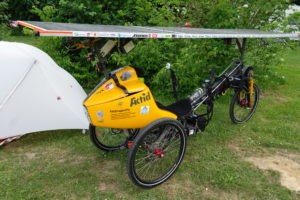
And, last but not least, the bike of the master Bernard Cauquil! Here, no classic transmission: you pedal on a dynamo that recharges the battery, and the motor transmits the power to the Rolhoff 14 speed hub located in the front wheel via a belt, the second one allowing the regeneration (recharging via the motor brake in the descent). All this with panels that automatically look for the right inclination in order to maximize the production, it’s the top!
I hope you liked these explanations. What I really like about this event is the diversity of the machines. For an amateur like me, it’s a real pleasure to see 🙂
See you soon!
